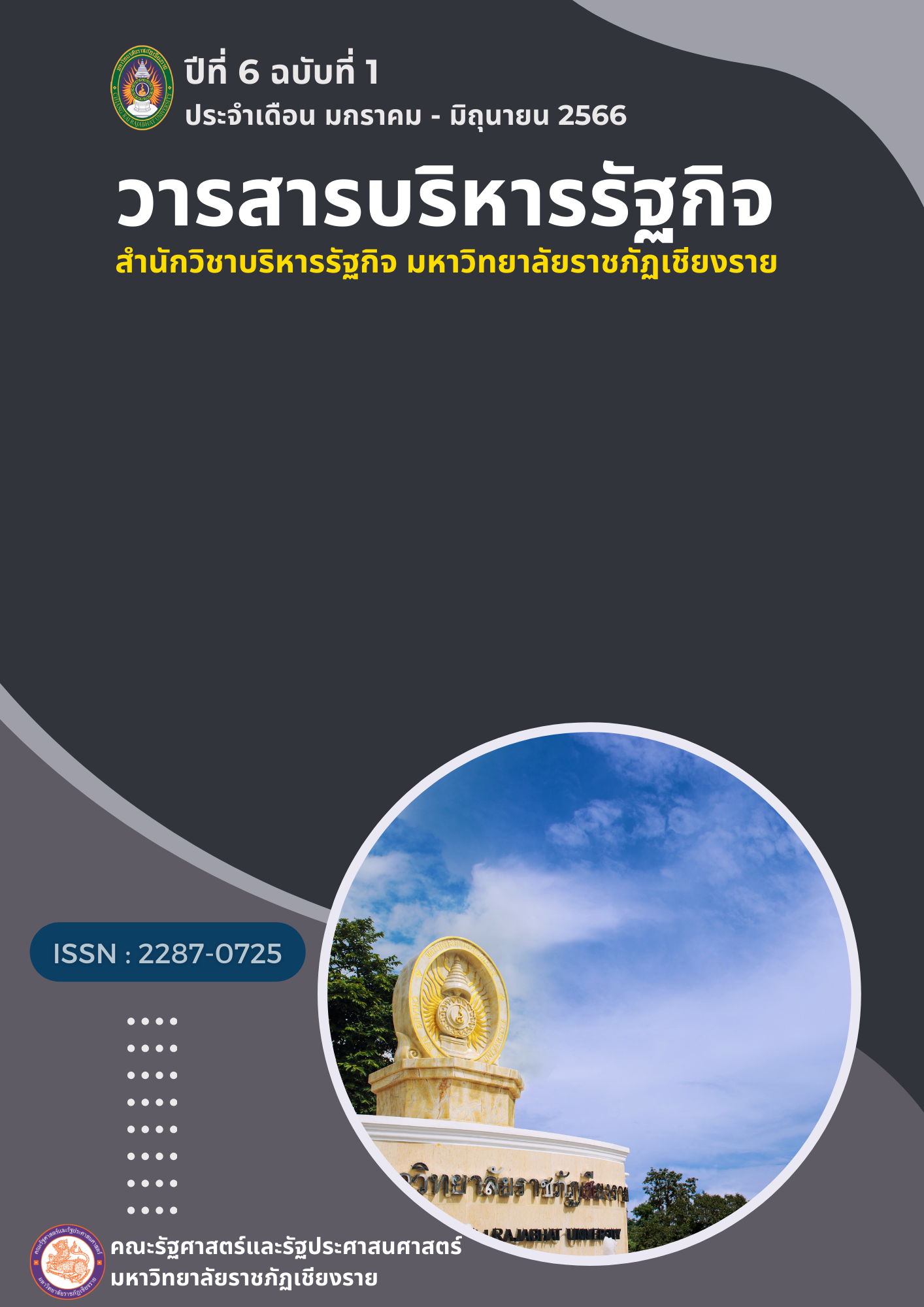History of the Development of the Thai Constitution
Main Article Content
Abstract
This article Aiming at reviewing the development of the Thai Constitution Since the influence of constitutional ideas came to the land of Siam during the reign of King Mongkut (King Rama IV) onwards, which is considered an international political trend that has been widely discussed and criticized around the world. During that time until the creation of the first constitution in the period after "Siamese Revolution 1932" and appears to have developed continuously. Throughout the period between 1932 and 2017, Thailand had a total of 20 constitutions enacted through a dynamic social, economic, and political context. Whether it is the feudal warlord era half-democracy era People's Democratic Era and the democratic era with different colors of shirts, this makes it known that the Thai Constitution has its roots in a revolution, a coup, and drafting by the people. Drafting by the legislature includes drafting by officials or the military through legislative bodies, in order to focus on the succession of power through constitutional mechanisms. Therefore, revisiting the history of the Thai constitution allows us to thoroughly reconsider the social, economic, and political contexts of each era. It also leads to a concrete analysis, prediction, and prediction of the nature of the Thai Constitution in the future.
Article Details
References
กิจบดี ก้องเบญจภุช. (2553). กฎหมายรัฐธรรมนูญและสถาบันการเมือง. กรุงเทพมหานคร: มหาวิทยาลัยรามคำแหง.
จักษ์ พันธ์ชูเพชร. (2557). กฎหมายรัฐธรรมนูญและกฎหมายปกครอง (พิมพ์ครั้งที่ 3). นนทบุรี: ธนภัทร (2006) พริ้นติ้ง.
ชาญชัย แสวงศักดิ์. (2560). กฎหมายรัฐธรรมนูญ : แนวคิดและประสบการณ์ของต่างประเทศ. (พิมพ์ครั้งที่ 6). กรุงเทพมหานคร: วิญญูชน.
ณัฐกร วิทิตานนท์. (2557). หลักรัฐธรรมนูญเบื้องต้น (พิมพ์ครั้งที่ 3). กรุงเทพมหานคร: จุฬาลงกรณ์มหาวิทยาลัย.
นรนิติ เศรษฐบุตร. (2558). รัฐธรรมนูญไทยกับการเมืองไทย (พิมพ์ครั้งที่ 2 แก้ไขเพิ่มเติม). กรุงเทพมหานคร: มหาวิทยาลัยธรรมศาสตร์.
บัณฑิต จันทร์โรจนกิจ. (2558). รัฐธรรมนูญแห่งราชอาณาจักรไทย : ความเป็นมาและสาระสำคัญ. กรุงเทพมหานคร: สถาบันพระปกเกล้า.
โภคิน พลกุล. (2531). ปัญหาและข้อคิดบางเรื่องจากรัฐธรรมนูญไทย. กรุงเทพมหานคร: ศูนย์การพิมพ์พลชัย.
มนตรี รูปสุวรรณ. (2543). กฎหมายรัฐธรรมนูญ (พิมพ์ครั้งที่ 7). กรุงเทพมหานคร: มหาวิทยาลัยรามคำแหง.
มานิตย์ จุมปา. (2553). ความรู้เบื้องต้นเกี่ยวกับรัฐธรรมนูญแห่งราชอาณาจักรไทย (พ.ศ. 2550) (พิมพ์ครั้งที่ 2). กรุงเทพมหานคร: สำนักพิมพ์แห่งจุฬาลงกรณ์มหาวิทยาลัย.
ยุทธศาสตร์ หน่อแก้ว. (2565). การบริหารการเมืองรูปแบบไทย ในปี พ.ศ. 2540-2560: ผลผลิตการปฏิรูปการเมืองในวังวนประชาธิปไตยเชิงประชานิยม. สำนักวิชารัฐศาสตร์และรัฐประศาสนศาสตร์ มหาวิทยาลัยราชภัฏเชียงราย, เชียงราย: ปี้แอนด์น้อง.
ศักดิภัท เชาวน์ลักษณ์สกุล และยุพา ปราชญากูล. (2561). รัฐประหารกับการเมืองไทย. วารสารบริหารธุรกิจและสังคมศาสตร์มหาวิทยาลัยรามคำแหง, 1(3), 17-34.
ศาสตรินทร์ ตันสุน. (2557). ในความเหมือนและความต่างกระบวนการร่างรัฐธรรมนูญแห่งราชอาณาจักรไทย พุทธศักราช 2540 และรัฐธรรมนูญแห่งราชอาณาจักรไทย พุทธศักราช 2550. วารสารรัฐศาสตร์ปริทรรศ มหาวิทยาลัยเกษตรศาสตร์, 1(1), 31-56.
สนธิ เตชานันท์. (2518). แผนพัฒนาการเมืองไปสู่การปกครองระบบ “ประชาธิปไตย” ตามแนวพระราชดำริของพระบาทสมเด็จพระปกเกล้าเจ้าอยู่หัว. กรุงเทพมหานคร: โรงพิมพ์ไทยเขษม.
_______. (2545). แผนพัฒนาการเมืองไปสู่การปกครองระบอบ “ประชาธิปไตย” ตามแนวพระราชดำริ
ของพระบาทสมเด็จพระปกเกล้าเจ้าอยู่หัว (พิมพ์ครั้งที่ 4). กรุงเทพมหานคร: สถาบันพระปกเกล้า.
สากล พรหมสถิต. (2560). เอกสารประกอบการสอน รายวิชากฎหมายรัฐธรรมนูญและสถาบันการเมือง. สาขาวิชารัฐประศาสนศาสตร์ คณะมนุษยศาสตร์และสังคมศาสตร์ มหาวิทยาลัยราชภัฏบุรีรัมย์.


